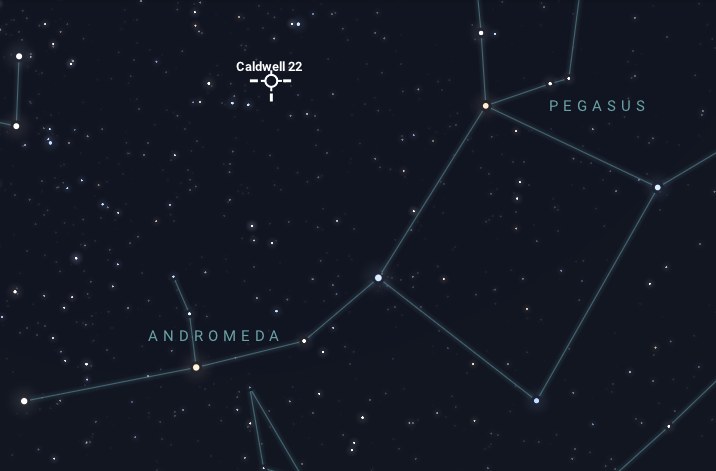NGC 7662, also known as the Blue Snowball Nebula and Caldwell 22, is a planetary nebula located in the constellation Andromeda, and visible in the northern sky. Planetary nebulae are the remnants of medium-sized stars like our Sun that have shed their outer layers as they reach the end of their life cycle. Here are some key details about this celestial object:
Composition
The Blue Snowball Nebula (NGC 7662) derives its name from its striking blue hue and nearly round shape, giving it the appearance of a snowball when viewed through a telescope. At its center lies a white dwarf, the hot, dense remnant of a star that expelled its outer layers to create the nebula. As the white dwarf’s core contracts and heats, it emits intense ultraviolet radiation, exciting the surrounding gas and causing it to glow.
Like many planetary nebulae, NGC 7662 primarily comprises hydrogen and helium gas, along with dust particles. Its characteristic blue coloration arises from the presence of ionized oxygen, which fluoresces in the ultraviolet light emitted by the central star.
Size and Distance
NGC 6578 has a physical size of approximately 0.3 by 0.4 arcminutes across the sky. In terms of light-years, the nebula’s size isn’t precisely defined, but it is generally considered to be relatively compact compared to other nebulae. Based on estimates, the size is thought to be around 0.5 to 1 light-year in diameter.
The distance to NGC 7662 from Earth is estimated to be around 1,800 light-years.
Observation
NGC 7662 is a popular target for amateur astronomers due to its relatively bright appearance and distinctive coloration. It can be observed using moderate-sized telescopes under dark skies. If you have binoculars with an aperature of atleast 50mm, and are observing from exceptionally dark skies with excellent transparency, you might catch a glimpse of NGC 7662 as a faint, fuzzy patch of light
The nebula can be observed at various times of the year, but the best months for observing it are typically from October to December (autumn to winter) in the northern hemisphere. During these months, Andromeda rises higher in the sky and is visible for longer periods during the night.
Clear skies and minimal light pollution are essential for observing faint objects like this nebula. Observing from a dark location away from city lights will enhance your chances of seeing it.




